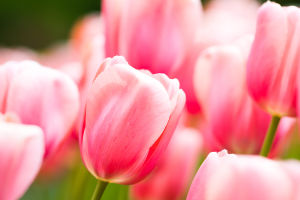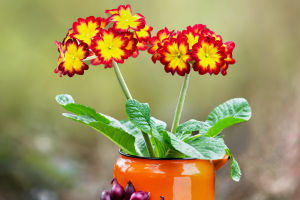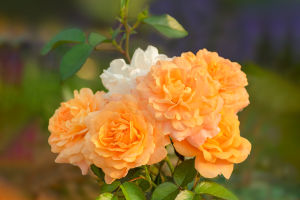Have you ever seen a grape hyacinth? It's a perennial bulbous flower introduced from Europe, renowned for its captivating smokey-blue appearance. Grape hyacinths bloom early and have a long flowering period, usually from March to May in spring.
They are commonly used in floral arrangements and can be grown in balcony pots, showcasing their versatility. Cultivating grape hyacinths at home can be done in both soil and hydroponic setups, with soil cultivation ensuring yearly flowering.
Today, let's delve into the cultivation methods of grape hyacinths:
1. Well-Draining Soil:
Since bulbous flowers dislike waterlogged soil, it's essential to use well-draining soil for potting. You can opt for sandy soil, bulb-specific soil, or a mix of peat, leaf mold, and perlite in equal parts. Incorporate a small bone meal and fermented organic fertilizer as base fertilizers when planting. When potting grape hyacinths, leave about an inch between bulbs, as multiple bulbs in a pot create a more aesthetically pleasing display.
Avoid excessive soil covering during planting. If the bulbs have sprouted, leave the shoots at the soil surface. If not, cover them up to the neck of the bulb. To prevent bulb rot, you can also cover half of the bulb, exposing the rest.
2. Water and Fertilizer Management:
Water ground-planted grape hyacinths once after planting and refrain from further watering. Water potted ones lightly after planting and avoid excessive watering until the bulbs sprout. Once the shoots emerge, regular watering and fertilizing can commence.
Start fertilizing when the plants have three leaves using a general-purpose water-soluble fertilizer every seven days. As the flower buds appear, switch to a phosphorus-potassium fertilizer. Cease fertilization after the buds color up, resuming it after flowering to promote bulb enlargement.
3. Adequate Sunlight:
Grape hyacinths thrive in ample sunlight but can tolerate partial shade, making them suitable for balcony cultivation. Sufficient sunlight during fall, winter, and early spring prevents excessive stretching. Even with limited sunlight, they can grow generally within 3-4 hours of exposure.
4. Temperature Control:
Grape hyacinths prefer temperatures between 15-30 degrees Celsius and can withstand temperatures as low as -10 degrees Celsius, making them suitable for outdoor overwintering in most regions. Avoid excessive warmth in winter to prevent elongation.
The plants may go dormant in hot summers, with the above-ground parts withering. In such cases, dig up the bulbs, dry them, and store them in a cool, ventilated place. In southern regions, storing the bulbs in the refrigerator at 2-5 degrees Celsius for a month before planting in autumn can enhance flowering.


